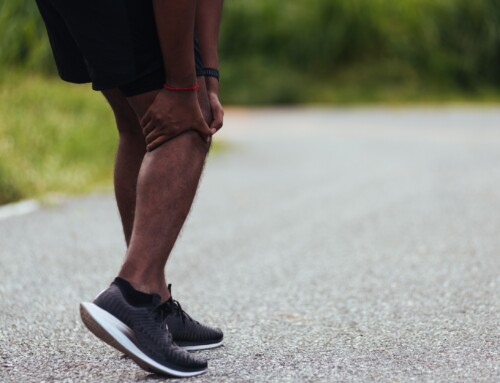Knee Pain In Runners
By: Dr. Kate Pratt, PT, DPT
These are two of the most common diagnoses for knee pain in runners. Pain on the side of the knee is often (but not always) related to ITBS, whereas pain on the front of the knee is often (but not always) related to PFPS. These two conditions don’t typically occur simultaneously. Both types of injuries are usually a result of repetitive strain.
Patellofemoral Pain Syndrome (PFPS) Symptoms

The primary pain in PFPS is mainly in the front of the knee. There is generally no particular tenderness to touch. Pain can increase with both ascending and descending stairs and hills, however ascending is usually worse. Pain typically starts and progresses slowly. Symptoms are typically aggravated by deep squatting, sitting with the knees bent and pain upon rising. Intensity and exact location of pain may fluctuate.
IT Band Syndrome Symptoms

Pain may be felt throughout the knee, however will be most severe on the side. The knee cap will likely be non-tender to touch, however the lateral aspect of the knee near the epicondyle is usually quite sensitive. Symptoms generally increase when descending stairs or hills, and is usually not painful at all during ascending. ITBS typically comes on rather quickly. Squatting and sitting (unless for prolonged periods of time) do not usually cause particular aggravation of pain. Symptoms of ITBS are relatively consistent in intensity and location.
Other Diagnoses For Knee Pain In Runners
Symptoms that are not typically associated with either diagnosis include: locking or instability, swelling, sudden onset indicating traumatic mechanism, throbbing pain in the back of the knee, paresthesia, and pain in the patellar tendon. The physical therapists at Capital Area Physical Therapy & Wellness are fully equipped to help patients get to the root of either diagnosis and help them become pain free starting with a thorough, comprehensive assessment and functional movement screen. We will then create an individual treatment plan created specifically for you to help you reach your goals of maximizing functional gains and returning to full participation in desired activities.
Related Physical Therapy Posts:
- Education on Hip Bursitis (Greater Trochanteric Bursitis)
- Planter Fasciitis in Runners
- Hip and Knee Pain
Contact Our Upstate NY Physical Therapy Clinics
Connect with our experienced staff to discuss how we can help relieve knee pain in runners and athletes. Our PT offices are located in Malta NY (518-289-5242) serving the Saratoga, Ballston Spa, Burnt Hills, Clifton Park region, and Queensbury NY (518-289-5242) clinic serving the Glens Falls, Lake George, Hudson Falls, Fort Edward, Corinth region.





